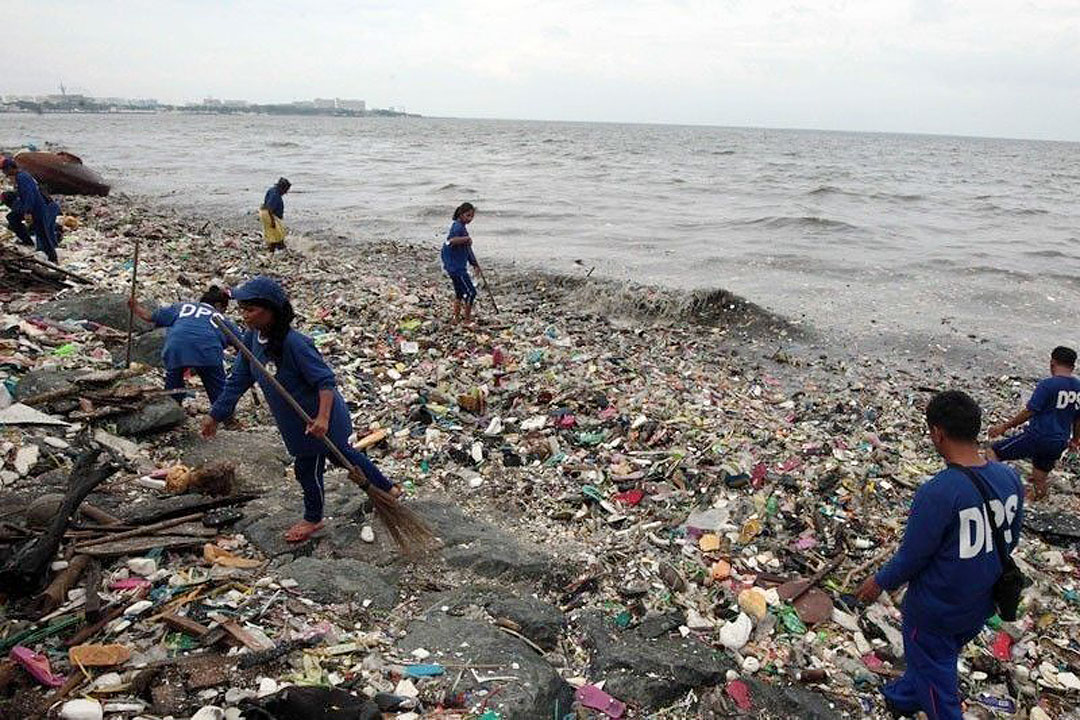Manila Bay rehab seen inadequate; bay unswimmable, fishery unhealthy

By Luisa Maria Jacinta C. Jocson
THE Department of Environment and Natural Resources (DENR)-led effort to rehabilitate Manila Bay has been hindered by the department’s inadequate enforcement of environmental law, an ocean conservation group said.
“The current efforts to rehabilitate Manila Bay are inadequate as we have yet to see a natural transformation of the bay into a safe, swimmable and healthy fisheries ecosystem,” Oceana Philippines Vice-President Gloria E. Ramos said in an e-mail interview.
“While agencies like the Department of the Interior and Local Government (DILG) have rolled out mechanisms to ensure compliance with fisheries law by local government units surrounding the bay through the Fisheries Compliance Audit, and the Bureau of Fisheries and Aquatic Resources (BFAR) has continued to abide by its mandate to protect fisheries and aquatic resources by refusing to give clearance to dump-and-fill and seabed quarrying projects in Manila Bay, we have yet to see an honest-to-goodness implementation of environmental law by the DENR,” Ms. Ramos said.
The DENR has been tasked to address the bay’s ecological issues, including managing fecal coliform levels in the water and enforcing sewage treatment rules.
Oceana said the department’s Dolomite sand beach project was “unsustainable and artificial” and noted that the issuance of environment compliance certificate for reclamation and seabed quarrying projects remain “unabated.”
“Manila Bay spans 199,400 hectares with a coastline that runs through several provinces. It has been a witness to battles that changed the course of our country’s history. Now it is battling an environmental war against dump-and-fill projects hiding behind the promise of development,” Ms. Ramos said.
According to the Philippine Reclamation Authority, there are 26 dump-and-fill projects along Manila Bay in varying stages of development.
“There is a massive reclamation project in Bulacan for the so-called New Manila International Airport that will impact 2,500 hectares of wetlands, including mangroves and other coastal habitats,” she said. “These lead to irreversible damage and threats to fragile ecosystems in the bay, such as sardines, wetlands, mangroves and other marine habitats that still exist in Manila Bay. More importantly, there will be massive losses of fishing grounds for subsistence fishers, flooding, storm surge and increased vulnerability to climate change impacts.”
Ms. Ramos said that future initiatives by the DENR should line up with the National Economic and Development Authority (NEDA)’s Manila Bay Sustainable Development Plan.
“This is a long-term vision that is consistent with the writ of continuing mandamus and ensures the restoration of this important marine ecosystem to reduce the risks to communities living around the bay against present threats like flooding and future threats of climate change,” she said.
“Coastal local government units should prioritize their mandate of protection of municipal waters and implementation of environmental laws. Toward this end, LGUs should mainstream honest-to-goodness public participation and seriously integrate the impacts of climate change in all their programs, activities and projects,” she added.
The DENR said that it is gearing up to continue its rehabilitation program in 2022, despite setbacks last year due to natural hazards and the pandemic.
“I am especially pleased with our transformation of Manila Bay. We should be more appreciative of what we have achieved thus far, despite the challenges posed by the pandemic and natural disasters over the past couple of years,” DENR Secretary Roy A. Cimatu said in a statement.
“Our sewage treatment plants in three outfalls are reducing fecal coliform counts significantly in the bay’s water. Along with solar-powered restrooms and other geo-engineering interventions, our work will enable the public to enjoy swimming, boating, and fishing in the bay, hopefully by the end of my term this midyear, in addition to strolling on the dolomite beach,” he added.
DENR Assistant Secretary for Field Operations Gilbert C. Gonzales said that the department’s regional offices hired 2,379 rangers to conduct daily cleanup and have collected 82 million cubic meters of waste so far.
The DENR-National Capital Region (NCR), where the concentration of the rehabilitation program is being conducted, had the largest amount of waste collected at around 72 million cubic meters.
A total of 249 trash traps were also installed to control the outflow of garbage from the tributaries to Manila Bay. Region III has installed 223 trash traps, followed by Region IV-A with 16, and the NCR with 10.
“These are the immediate measures that were introduced by the three regions to be able to address the garbage that flows out to the Manila Bay,” Mr. Gonzales said.



